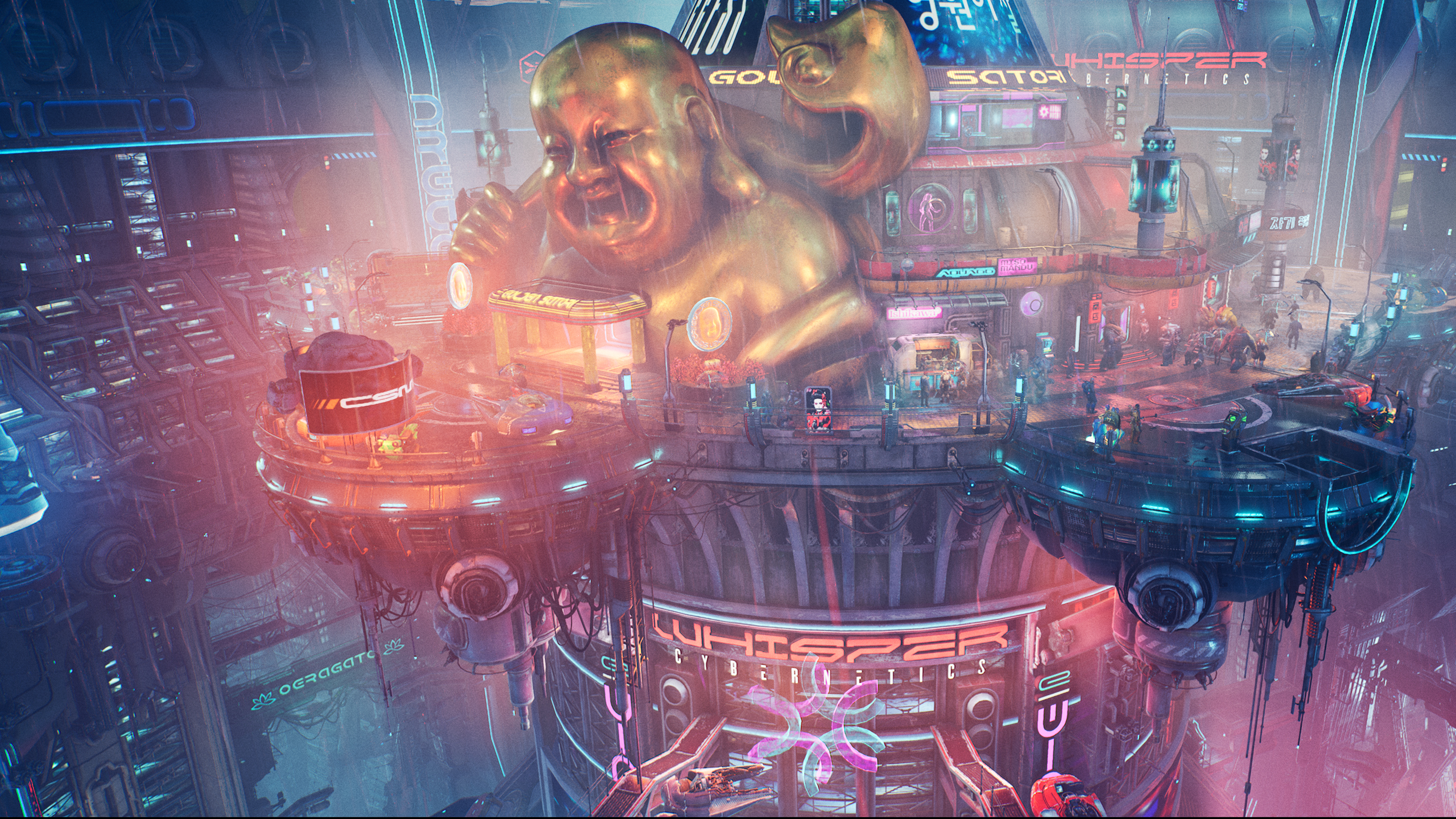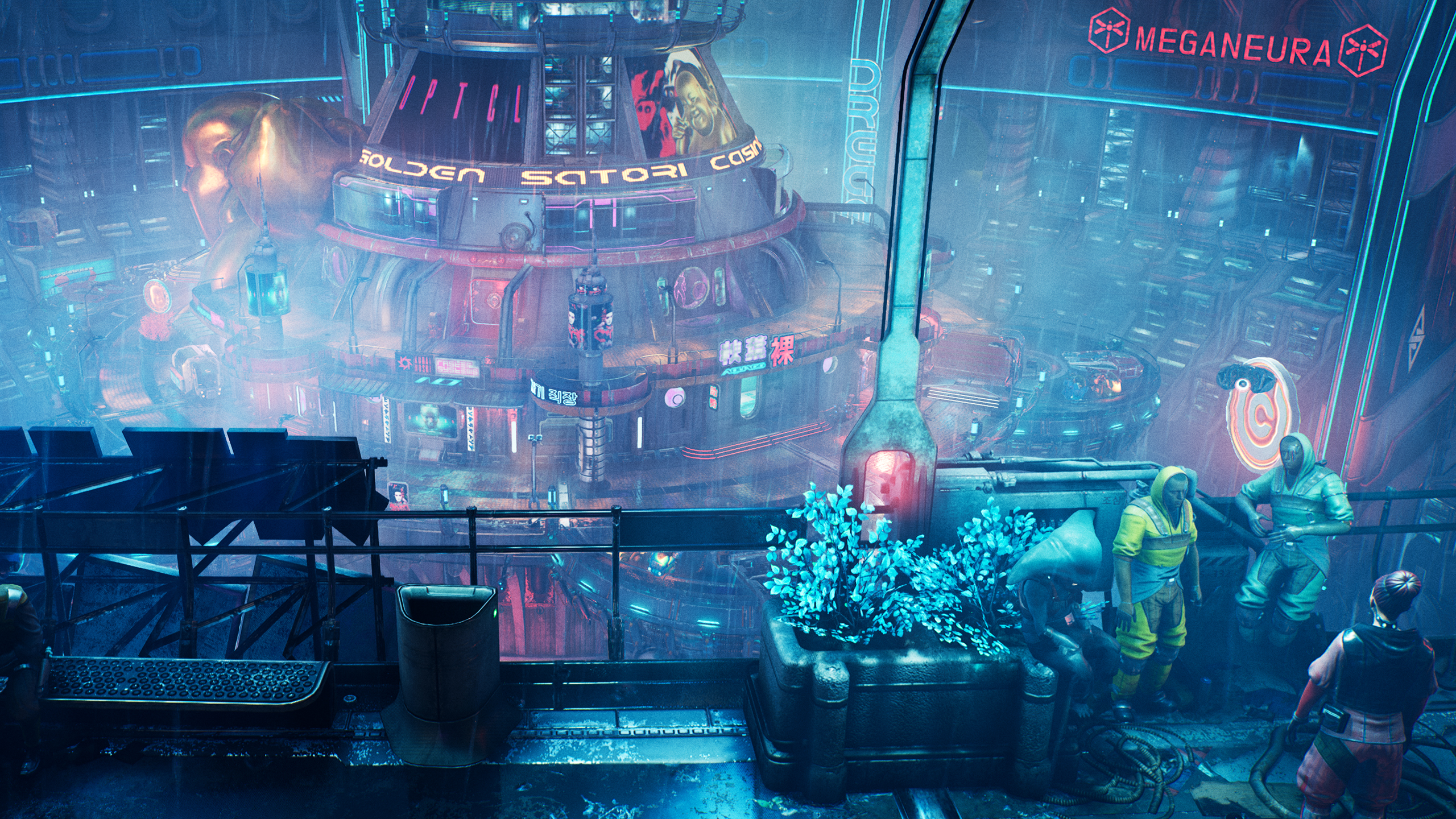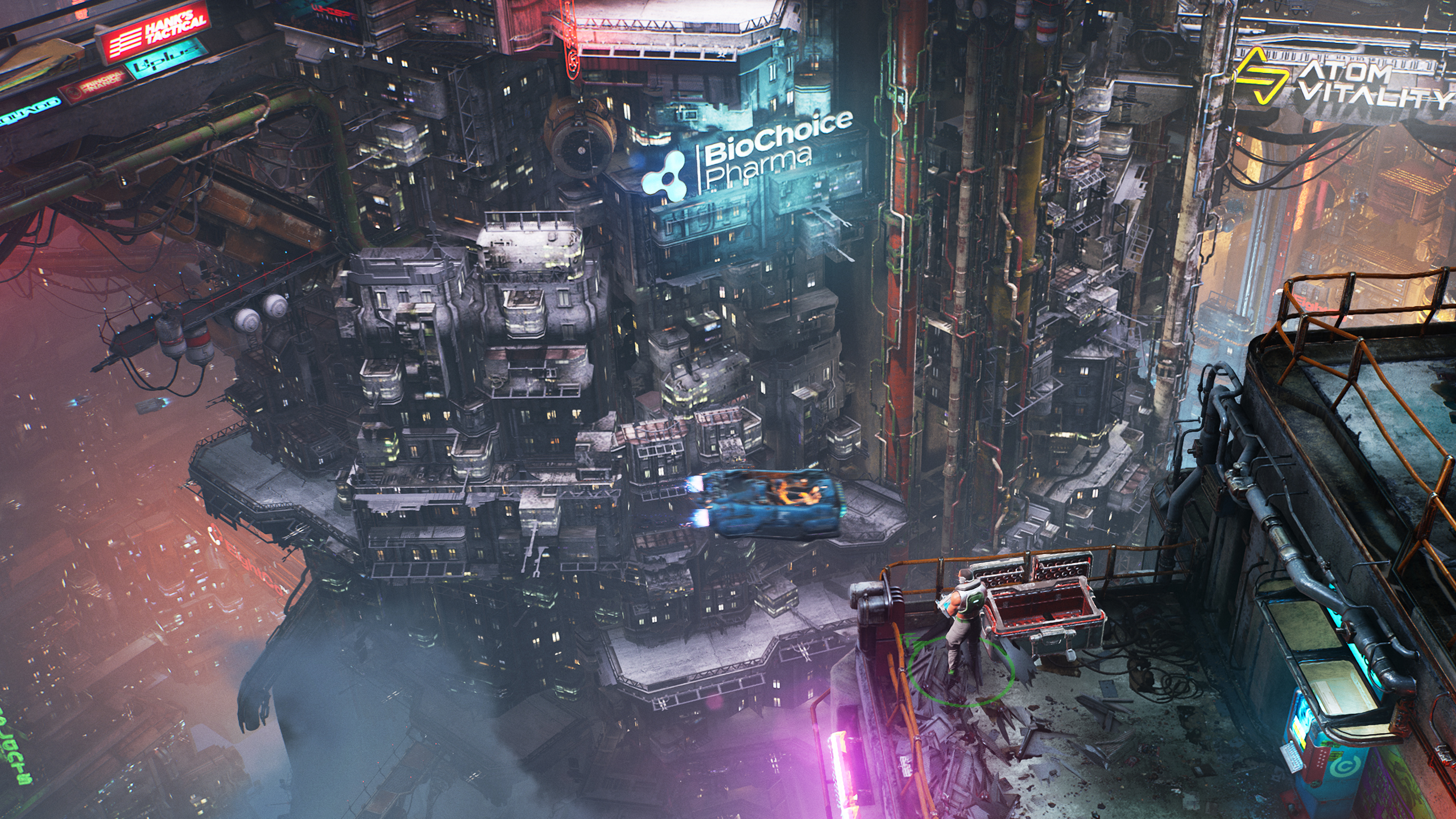The Ascent's cyberpunk metropolis is way cooler than Night City
Cyberpunk 2077's setting has nothing on the Arcology.

The Ascent takes place in the Arcology: a colossal, monolithic skyscraper, home to hundreds of thousands of beings from all over the galaxy. Imagine an entire city built vertically. It reminds me of the infamously dense, overcrowded Kowloon Walled City—huge numbers of people squeezed into a cramped, ramshackle space—crossed with Akira's futuristic, neon-speckled Neo Tokyo. And it's one of the most impressive settings I've encountered in a videogame. The game itself is great: a brutal, satisfying action RPG with some gloriously fierce, meaty combat. But the intricately detailed Arcology, with its varied districts and palpable atmosphere, is what really captured my imagination.
Your character in The Ascent is a migrant worker whose passage to the Arcology, which is located on a distant planet named Veles, was paid for by a megacorporation. And now this corp, the Ascent Group, wants you to work to pay the astronomical cost of the ticket back. It's what I alway imagine when I see that blimp in Blade Runner advertising the off-world colonies: "The chance to begin again in a golden land of opportunity and adventure!" The glittering promise of a better life, but really just a way for a vast, soulless corporation to get another employee for life, eternally crushed by debt.

As you progress through the story, making a name for yourself as a mercenary, your character literally ascends—from the dark, crowded depths of the Arcology to the gleaming pinnacle, where the wealthy enjoy a life of space and luxury. And as you move up the structure, the aesthetic and vibe of the city changes around you. This is most striking when, a few hours in, you gain access to an area called Highstreet. Until that point you've been scurrying around in the lower levels—in places like the grim, industrial Deepstink—but suddenly you find yourself gazing across a misty valley of skyscrapers and neon billboards.
It's a magnificent piece of world-building and scene-setting, and the game repeats this trick several more times, giving a real sense of this immense vertical city's scale— as well as its unique geography, history, and social divides. And there's an impressive amount of variety in the city too, such as Coder's Cove, a dingy hideout for hackers located in the flooded Black Lake district, the lavish Golden Satori casino, dominated by giant gold Buddha statues, and the HQ of the Onyx Void gang, hidden inside a massive smiling cat's head.
The Ascent's setting is impressive on a grand scale when you're treated to one of those sumptuous cyberpunk vistas, but equally so on a micro scale too. The environments are cluttered, bustling, and convincingly lived-in. Mountains of trash, grimy apartments visible through dirty windows, streams of flying cars streaking between buildings, maintenance bots fixing broken street lights, screens looping garish commercials... there's just so much going on across every inch of screen.

And it's not just the density that's impressive, but the art too. The costumes, corp logos, mechs, cars, machinery, and buildings are all obscenely detailed and brilliantly, thoughtfully designed.
So yeah. It's safe to say I love this setting. And as I played The Ascent I couldn't help but think back to my time with Cyberpunk 2077. I wrote about how I found Night City, despite making a strong first impression, ultimately quite shallow and superficial. I never really believed in it as a setting: a feeling that only grew stronger the more hours I spent there. The Ascent is, of course, a completely different kind of game. It's an isometric shooter rather than a big open world RPG. But I'm amazed (and, honestly, a little surprised) by how much more evocative and intriguing I found its setting to be.
Keep up to date with the most important stories and the best deals, as picked by the PC Gamer team.

The concept of a city crammed into an enormous skyscraper is immediately more interesting and imaginative. Remove some of the video billboards and holographic neon signs, and Night City could be any modern metropolis. It's the future, but it's familiar. Yet the idea of this towering, multi-level Arcology, teeming with life from all corners of the galaxy, where each level represents a different social stratum, is incredibly compelling. And I love the idea that Veles is covered in them; that this Arcology, with all its life and drama, is just one of many vertical cities littering the planet's polluted surface.
And by adding some elements of science fiction—namely, a whole host of weird, shady aliens straight out of the Mos Eisley cantina—The Ascent brings something a little different to the well-trodden cyberpunk genre. It's a lively, vibrant combination of cynical, anti-corporate '80s cyberpunk and the seedy, scuzzy criminal underbelly of the Star Wars universe. And it has the grotty, punky feel of an '80s comic book too, like something off the yellowed, dog-eared pages of an old issue of 2000 AD or Heavy Metal.

Cyberpunk 2077 is also a game where you get the sense that it's trying really hard to be cool. There's something contrived about Night City's futuristic fashion and street slang—it feels unnatural and forced. The Ascent, on the other hand, is much better at drawing you into its world and making you believe in it, without feeling like it's trying to. It's stylish in an understated way; a word Cyberpunk doesn't really have in its vocabulary. When I spend time in the Arcology, I never question anything in it—I just accept it. It's a setting that feels considered and fully formed, while Cyberpunk's setting is riddled with inconsistencies and a sense that the developer bit off more than it could chew.
My only real gripe with The Ascent is that it isn't enough of an RPG—certainly not to the level a setting this good deserves. There are some sidequests and a few chatty NPCs, but it's all pretty inconsequential. This is one area where Night City has the edge. There you can explore, interact with things, and uncover stories, while the Arcology is really just a beautifully designed backdrop for a fast-paced shooter. I'd love to see a future Ascent game (if they ever make one) become more of a CRPG, with much deeper role-playing. But even with this limited level of interaction, it's still my favourite cyberpunk city on PC.
- The Ascent guide: 7 tips for cyberpunk success
If it’s set in space, Andy will probably write about it. He loves sci-fi, adventure games, taking screenshots, Twin Peaks, weird sims, Alien: Isolation, and anything with a good story.


